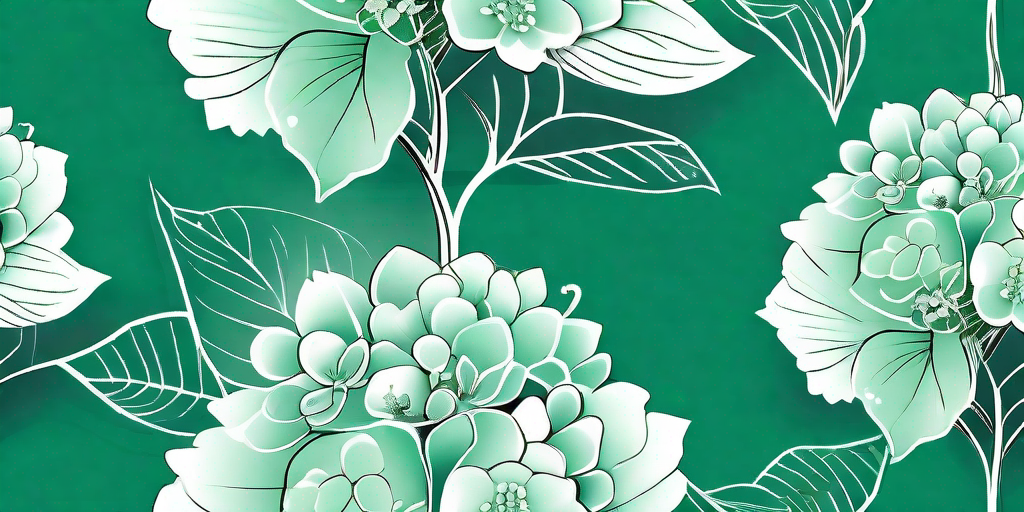
Ladies and gentlemen, garden enthusiasts and green thumbs, let's talk about the belle of the botanical ball, the Lace Cap Hydrangea. This isn't your average, run-of-the-mill flower. Oh no, this is a bloom with a boom, a petal with pizzazz, a blossom that's, well, bloomin' marvelous! So, buckle up, because we're about to embark on a horticultural adventure of elegance and charm.
The Lace Cap Hydrangea: A Floral Introduction
Before we dive into the nitty-gritty, let's take a moment to appreciate the Lace Cap Hydrangea in all its glory. Originating from the land of the rising sun, Japan, this flower has been turning heads and winning hearts for centuries. Its unique, flat bloom structure, surrounded by a halo of showy, sterile flowers, gives it a distinctive and attractive appearance.
But it's not just a pretty face. The Lace Cap Hydrangea is a hardy little number, able to thrive in a variety of climates and soil types. Plus, it's a magnet for pollinators, making it an eco-friendly addition to any garden. Now that's what we call flower power!
Planting and Caring for Your Lace Cap Hydrangea
Choosing the Perfect Spot
Location, location, location. It's not just important in real estate, but in gardening too. The Lace Cap Hydrangea prefers a spot with morning sun and afternoon shade. Too much heat can cause wilting, while too little light can lead to fewer blooms.
As for soil, this flower isn't too fussy. However, it does prefer well-drained, fertile soil. So, if you're dealing with heavy clay or sandy soil, you might want to amend it with compost or organic matter to give your hydrangea the best start in life.
Planting and Watering
When it comes to planting, dig a hole as deep as the root ball and twice as wide. Place your hydrangea in the hole, backfill with soil, and water thoroughly. After planting, water your hydrangea regularly, especially during dry spells. But be careful not to overwater, as this can lead to root rot.
And there you have it, the basics of planting and caring for your Lace Cap Hydrangea. But, as with any plant, there's always more to learn. So, let's delve a little deeper, shall we?
Understanding and Manipulating Hydrangea Colours
The Science Behind the Shades
One of the most fascinating aspects of hydrangeas is their ability to change colour. But how does this happen? Well, it all comes down to the pH level of the soil. Acidic soil (pH below 7) will produce blue flowers, while alkaline soil (pH above 7) will result in pink blooms.
But wait, there's more! The intensity of the colour can also be affected by the presence of aluminum in the soil. More aluminum equals more vibrant colours. Now, isn't that a fun fact to impress your gardening buddies with?
Changing Colours: A How-To Guide
If you fancy a change of scenery, you can manipulate your hydrangea's colour by adjusting the pH level of the soil. To make your blooms bluer, add aluminum sulfate or garden sulfur. To turn them pinker, add lime.
Remember, these changes won't happen overnight. It can take several weeks or even months for the colour change to take effect. But, as they say, good things come to those who wait!
FAQs about Lace Cap Hydrangeas
- When should I prune my Lace Cap Hydrangea?
Prune your hydrangea in late winter or early spring, before new growth begins. However, be careful not to remove any buds, as this could affect blooming.
- Why are my hydrangea leaves turning yellow?
Yellow leaves can be a sign of overwatering or poor drainage. Check your watering schedule and the condition of your soil to rectify the issue.
- Can I grow Lace Cap Hydrangeas in pots?
Absolutely! Just make sure to choose a large enough pot and use well-draining soil. Also, remember that potted hydrangeas will need more frequent watering than those planted in the ground.
Conclusion
So there you have it, a comprehensive guide to the Lace Cap Hydrangea. From planting and care to colour manipulation and troubleshooting, we've covered it all. Now, all that's left is for you to roll up your sleeves, get your hands dirty, and bring some flower power to your garden!
Remember, gardening is a journey, not a destination. So, take your time, enjoy the process, and don't forget to stop and smell the hydrangeas!















